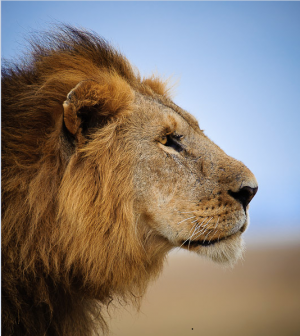News
Latest Lion Aid News
LionAid - Scientific estimate of lion populations in Africa
Thursday 27th December 2012
|
A recent publication by researchers at Duke University estimated 32,000 lions remain on the African continent. This was based on extrapolation of lion populations into remote sensing data of available savanna habitats. The Duke University estimate corresponds well with estimates made in 2002 by two independent groups, and is lower than published estimates in 2006 made by delegates at two IUCN lion range state conferences. LionAid has made a new assessment based on various publications since 2006, our lion range state conference in March 2012 and our Conservation Perception Rank of 17 lion range states. LionAid estimates that of 49 continental African nations, lions are extinct in 25 (51%), virtually extinct in 10 (20%), and only have some possible future in 14 (28%). Only five populations number over 1,000 lions and these are located in Tanzania/Kenya (3), South Africa (1) and Botswana/Zimbabwe (1). Uniquely genetically distinct western and central African lions are virtually extinct. LionAid estimates that 645-795 wild lions remain in western and central Africa and that 14,450 wild lions remain in eastern and southern Africa - for a continental total of 15,244 wild lions. This is 58% lower than 2006 IUCN estimates that optimistically considered viable lion populations remaining in Somalia, Chad, Central African Republic, Democratic Republic of Congo and South Sudan. LionAid perhaps more realistically considers these populations extinct or likely to be extinct in the next few years. Of 20 western and central African lion locations identified in 2006, LionAid and others estimate that lions are extinct in 13 areas. Of 66 eastern and southern African lion locations identified in 2006, LionAid estimates that lions are extinct in 21 areas. LionAid believes that lion populations have declined for a variety of reasons including habitat loss; destruction of natural prey due to poaching for households and the bush meat trade; human/livestock/predator conflict; impact of diseases like canine distemper, bovine tuberculosis and feline immunodeficiency virus; illegal wildlife trade in lion products and live animals; excessive trophy hunting. LionAid acknowledges that lions are the only large cat species not given adequate protection status by international organizations like CITES and the IUCN. LionAid acknowledges that some major conservation organizations still believe that trophy hunting of lions can contribute to this species’ conservation. LionAid has long insisted that lion conservation will need equal attention to that awarded tigers and rhinos for example. Perhaps with this publication of realistic lion population numbers in Africa there will be a change in present complacency towards this species’ conservation needs. Click here to access the full article, including the lists of all continental Afican countries where wild lion populations still exist, all continental African countries where wild lions only exist in small, scattered populations (or might already be extinct in 2012) and all continental African countries where wild lions are already extinct. Picture credit: David Lloyd Wildlife Photography Tags: lions, Africa, IUCN, population decline Categories: Trophy Hunting, Population declines |
Posted by Pieter Kat at 14:53
No comments have been posted yet.
Add a new comment
Existing user
New user sign up




